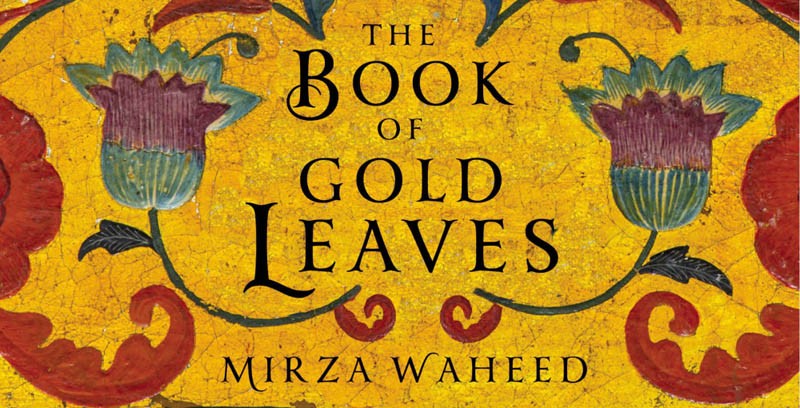
A beautiful love tale reflects once again that the continued tragedy of Kashmir is an important work of fiction for a long time to come

In his beautifully titled second novel The Book of Gold Leaves, Mirza Waheed’s chief concern is to show how an ordinary love between two individuals blossoms in a city in conflict and how it transforms their lives and perspective over time. Waheed is both natural and authentic as he shows the changing Srinagar as well as its culture and civilisation. That is a great accomplishment especially when there was a danger that by using the same locale and similar situations as in his earlier book The Collaborator (Penguin 2011), he might have ended up repeating himself.
Set in the context of late 1980s and early 1990s when the liberation movement was at its peak in Srinagar, Waheed deliberately avoids high politics of the time. Rather, he banks upon a series of micro-narratives through his powerfully-constructed characters to showcase an unlikely love story between Faiz, a quality papier-mâché artist and Roohi, a brainy downtown stunning beauty living with her traditionally conservative family.
This ordinary love story in extraordinary times soon changes the nature of the main characters dramatically as circumstances change around them. Faiz can no more stand the security checkposts on the main road, the intimidation of local boys from the military and, finally, the unfortunate killing of school children and their teacher Fatima.
Without overemphasising the politics of the time, Waheed shows how an apolitical artist in Srinagar with prospects of recognition at a national scale compromises his dream to live a normal blissful life with his beloved and joins a training camp inside Pakistan to become a freedom fighter.
The strength of Mirza Waheed lies in his lyrical description of Srinagar: the sights and sounds, the lake and boats, the shrine, the winding streets of the town, the bridge, the shops and the school. It’s almost a perfect society at work in a perfect city. Tradition is important for Waheed and the Muslim rituals of Moharram, the working of the shrine, the daily lives of typical Kashmiri families, their food and art are all described in great detail.
It was this level of detail on his subject which eventually became Waheed’s limitation in some ways. As he successfully establishes his scene setting and rationale for various characters and their situations in the first hundred or so pages, the same range of characters reappear again in almost similar situations without forwarding the story too much. The author was possibly trying to rescue his novel from becoming a thriller which can be a risk for fiction set in a real conflict, especially in the South Asian context where reality often runs faster than fiction.
Thus, in the middle of the novel, there are the self-indulgent cultural commentaries where fiction is reduced to celebrating a particular culture and way of life. That is where the author missed an opportunity in keeping Faiz restricted to his somewhat bland description of training camps in Pakistan and not trying to expose him to the politics and management of private jihad inside Pakistan and its infrastructure. Waheed could have taken some risks in extending his range and exploring some bigger themes of the time. He, however, chose to stay closer to his familiar territory.
All of this comes together very well, especially in the final stages of the novel where powerful scenes of Faiz’s meeting with Roohi’s family and a sort of collective mourning of individual and collective tragedies leaves a strong impact on the reader.
The last few years have contributed significantly in improving our understanding of the reality of resistance movement in Kashmir. Beyond the dogmatic national narratives of India and Pakistan, Waheed’s present and earlier novel along with Basharat Peernonfiction Curfewed Nights (2010) and adaptation of Hamlet into Vishal Bardhwaj’s Haider last year give new insights into how families, communities and other social collectives were affected by this continued militancy. These have helped change the language of conflict otherwise held hostage by the national security experts of India and Pakistan.
In many ways, films like Haider and Waheed’s novels bring home the same old point: Kashmir struggle is indigenous, broad-based and is not going to fade so soon. They clearly show the extent of support for freedom fighters in families that were otherwise never active in militant resistance, to an extent of turning even ordinary people into front-line jihadists.
Post 9/11 has changed the nature and mode of resistance, making it much calmer than before. But Kashmiris will not compromise easily on their rights. The private jihad of 1980s and early 1990s backfired not only in Kashmir but in mainland Pakistan too. That is why Waheed’s characters’ disillusionment with India is total but their fascination with Pakistan is also over.
If fiction is a bridge between dream and reality, Waheed’s work successfully demonstrates that the liberation dream is still alive, is very much a part of Kashmiri identity and is dearer to them than just being reduced to the status of an Indian or a Pakistani national.
That sensitivity shared in a beautiful love tale reflects once again that the continued tragedy of Kashmir is an important work of fiction for a long time to come.